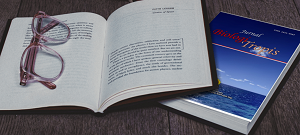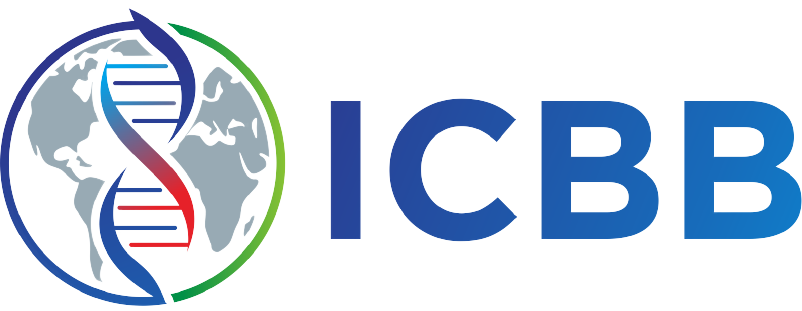Effectiveness of Different Binders in Improving Feed Stability and Survival Rate of Mud Crab (Scylla sp.) Fed Trash Fish-Based Diet
Authors
Wastu Ayu Diamahesa , Zaenal Abidin , Dewi Putri Lestari , Sahrul Alim , Thoy Batun Citra Rahmadani , Ni Luh MutiaraDOI:
10.29303/jbt.v25i3.9896Published:
2025-08-06Issue:
Vol. 25 No. 3 (2025): Juli-SeptemberKeywords:
Feed binder; Feed Stability; Mud crab (Scylla sp.); Trash Fish; Survival RateArticles
Downloads
How to Cite
Downloads
Metrics
Abstract
Feed stability is crucial in aquaculture to minimize nutrient loss and ensure optimal growth of cultured species. This study evaluated the effects of different binders (carboxymethyl cellulose/CMC, wheat gluten, tapioca flour, and Gracilaria sp. flour) at 3% and 5% concentrations, processed via hot and cold mixing methods, on feed stability and survival of mud crab (Scylla spp.). Conducted over 45 days, the research involved feed formulation, stability testing in seawater (30 ppt salinity), and a 30-day feeding trial in a recirculating aquaculture system. Results showed that binder type and processing method significantly influenced feed integrity, with CMC 5% + hot mixing exhibiting the highest stability (96.99% retention after 240 minutes), while tapioca 5% + hot mixing degraded fastest. All formulations met the ≥70% stability threshold after 120 minutes, confirming suitability for aquaculture. The feeding trial revealed 100% survival across all treatments, indicating that binder selection can prioritize physical stability without compromising crab health. Hot processing consistently enhanced binder performance, particularly for polysaccharide-based CMC and Gracilaria sp. flour. These findings suggest CMC 5% (hot) as the optimal binder for durable mud crab feed, whereas tapioca requires careful concentration control. The study provides practical insights for feed development, though further replicated trials under varied farming conditions are recommended to validate commercial applicability. This research contributes to sustainable aquaculture by improving feed efficiency and reducing waste in mud crab production.
References
Agustiyana, C., Hadiroseyani, Y., Diatin, I., & Effendi, I. (2024). Optimization of the production of soft shell crab (Scylla sp.) cultivation using the apartment system. Egyptian Journal of Aquatic Research, 50(4), 552–557. https://doi.org/10.1016/j.ejar.2024.05.003
Ahamad Ali, S., Gopal, C., Ramana, J. V., Sampoornam, B., Vasu, C. A., Vaitheeswaran, T., & Selvakumar, P. (2010). Evaluation of selected binders in a ring-die pellet mill for processing shrimp feed pellets. Indian Journal of Fisheries, 57(1), 103–106.
Aksoy, B., Yildirim-Aksoy, M., Jiang, Z., & Beck, B. (2022). Novel animal feed binder from soybean hulls -evaluation of binding properties. Animal Feed Science and Technology, 288, 115292. https://doi.org/10.1016/j.anifeedsci.2022.115292
Amirkolaie, A. K. (2011). Reduction in the environmental impact of waste discharged by fish farms through feed and feeding. Reviews in Aquaculture, 3(1), 19–26. https://doi.org/10.1111/j.1753-5131.2010.01040.x
Bhambri, A., & Karn, S. K. (2020). Biotechnique for nitrogen and phosphorus removal: a possible insight. Chemistry and Ecology, 36(8), 785–809. https://doi.org/10.1080/02757540.2020.1777991
Bonilla, J. C., Erturk, M. Y., Schaber, J. A., & Kokini, J. L. (2020). Distribution and function of LMW glutenins, HMW glutenins, and gliadins in wheat doughs analyzed with ‘in situ’ detection and quantitative imaging techniques. Journal of Cereal Science, 93, 102931. https://doi.org/10.1016/j.jcs.2020.102931
Brooks MS, R. V. (2013). Fish Processing Wastes as a Potential Source of Proteins, Amino Acids and Oils: A Critical Review. Journal of Microbial & Biochemical Technology, 05(04). https://doi.org/10.4172/1948-5948.1000110
Cheng, H., & Sørensen, M. (2025). Feed manufacturing technology. In Feed and Feeding for Fish and Shellfish (pp. 279–307). Elsevier. https://doi.org/10.1016/B978-0-443-21556-8.00008-9
Diamahesa, W. A., Setyono, B. D. H., Affandi, R. I., & Diniariwisan, D. (2024). Potensi dan Kadar Nutrisi Ikan Rucah yang Didaratkan di pantai Ampenan, Nusa Tenggara Barat. Jurnal Perikanan Unram, 13(4), 971–978. https://doi.org/10.29303/jp.v13i4.718
Dominy, W. G., Cody, J. J., Terpstra, J. H., Obaldo, L. G., Chai, M. K., Takamori, T. I., Larsen, B., & Forster, I. P. (2004). A Comparative Study of the Physical and Biological Properties of Commercially-Available Binders for Shrimp Feeds. Journal of Applied Aquaculture, 14(3–4), 81–99. https://doi.org/10.1300/J028v14n03_07
Ferreira, M. L. S., da Silva, F. M., dos Santos, M. C., Lucena, J. E. C., Sado, R. Y., & Bicudo, Á. J. de A. (2020). Heat-treated bean (Phaseolus vulgaris) residue meal as an alternative protein source in pelleted diets for Nile tilapia fingerlings: growth, body composition, and physical characteristics of diets. Tropical Animal Health and Production, 52(5), 2443–2450. https://doi.org/10.1007/s11250-020-02266-x
Fu, J., He, Y., & Cheng, F. (2024). Intelligent Cutting in Fish Processing: Efficient, High-quality, and Safe Production of Fish Products. Food and Bioprocess Technology, 17(4), 828–849. https://doi.org/10.1007/s11947-023-03163-5
Gao, S., Han, D., Zhu, X., Yang, Y., Liu, H., Xie, S., & Jin, J. (2020). Effects of gelatin or carboxymethyl cellulose supplementation during pelleting processing on feed quality, intestinal ultrastructure and growth performance in gibel carp ( Carassius gibelio ). Aquaculture Nutrition, 26(4), 1244–1254. https://doi.org/10.1111/anu.13080
Gencer, Ö. (2025). Dietary ınnovation in blue crab aquaculture: effects on performance and product quality. Aquaculture International, 33(3), 1–12. https://doi.org/10.1007/s10499-025-01899-9
Hardy, R. W., & Brezas, A. (2022). Diet formulation and manufacture. In Fish Nutrition (pp. 643–708). Elsevier. https://doi.org/10.1016/B978-0-12-819587-1.00002-1
He, Y., Liu, S., Ji, T., Kong, Y., & Shui, L. (2020). Effects of Organosilane-modified PCE on the Fluidity and Hydration Properties of Cement-Fly Ash Composite Binder. Journal of Wuhan University of Technology-Mater. Sci. Ed., 35(6), 1081–1089. https://doi.org/10.1007/s11595-020-2358-6
Hlaváč, D., Adámek, Z., Hartman, P., & Másílko, J. (2014). Effects of supplementary feeding in carp ponds on discharge water quality: a review. Aquaculture International, 22(1), 299–320. https://doi.org/10.1007/s10499-013-9718-6
Hoerterer, C., Petereit, J., Lannig, G., Johansen, J., Conceição, L. E. C., & Buck, B. H. (2022). Effects of dietary plant and animal protein sources and replacement levels on growth and feed performance and nutritional status of market-sized turbot (Scophthalmus maximus) in RAS. Frontiers in Marine Science, 9. https://doi.org/10.3389/fmars.2022.1023001
Jaya-Ram, A., Wong, S. C., & Shahirah, E. S. N. (2021). Feeding preference of juvenile mud crab (Scylla olivacea, Herbst, 1896) in captivity. Journal of Survey in Fisheries Sciences, 7(2), 189–198. https://doi.org/10.18331/SFS2021.7.2.16
Johny, A., Berge, G. M., Bogevik, A. S., Krasnov, A., Ruyter, B., Fæste, C. K., & Østbye, T.-K. K. (2020). Sensitivity to Dietary Wheat Gluten in Atlantic Salmon Indicated by Gene Expression Changes in Liver and Intestine. Genes, 11(11), 1339. https://doi.org/10.3390/genes11111339
Kousoulaki, K., Sveen, L., Norén, F., & Espmark, Å. (2022). Atlantic Salmon (Salmo salar) Performance Fed Low Trophic Ingredients in a Fish Meal and Fish Oil Free Diet. Frontiers in Physiology, 13. https://doi.org/10.3389/fphys.2022.884740
Lapierre, O. (2005). Système des acteurs et stratégie de formulation. Oléagineux, Corps Gras, Lipides, 12(3), 217–223. https://doi.org/10.1051/ocl.2005.0217
Liu, Y., Cao, Y., Zhang, Y., Fan, J., Zhou, H., Huang, H., Jiang, W., Zhang, W., Deng, J., & Tan, B. (2022). Intestinal flora and immunity response to different viscous diets in juvenile largemouth bass, Micropterus salmoides. Fish & Shellfish Immunology, 127, 1012–1023. https://doi.org/10.1016/j.fsi.2022.06.054
Liu, Y., Fan, J., Zhou, H., Zhang, Y., Huang, H., Cao, Y., Zhang, W., Deng, J., & Tan, B. (2022). Feeding juvenile largemouth bass (Micropterus salmoides) with carboxymethyl cellulose with different viscous: Impacts on nutrient digestibility, growth, and hepatic and gut morphology. Frontiers in Marine Science, 9. https://doi.org/10.3389/fmars.2022.1023872
Lopez, C. G., & Richtering, W. (2021). Oscillatory rheology of carboxymethyl cellulose gels: Influence of concentration and pH. Carbohydrate Polymers, 267, 118117. https://doi.org/10.1016/j.carbpol.2021.118117
Mediha, Y.-A., Aksoy, B., Ozdemir, Y. E., Beck, B. H., Aksoy, J., & Iglesias, M. C. (2025). Full utilization of liberated and modified fibers from plant biomass as feed binders. Journal of Agriculture and Food Research, 21, 101909. https://doi.org/10.1016/j.jafr.2025.101909
Megone, W., Tang, P., Roohpour, N., & Gautrot, J. E. (2021). Impact of the molecular structure of cationic binders on the rheological and adhesive properties of carboxymethyl cellulose-based coacervate hydrogels. Arkivoc, 2021(6), 101–119. https://doi.org/10.24820/ark.5550190.p011.516
Mente, E., Pierce, G. J., Santos, M. B., & Neofitou, C. (2006). Effect of feed and feeding in the culture of salmonids on the marine aquatic environment: a synthesis for European aquaculture. Aquaculture International, 14(5), 499–522. https://doi.org/10.1007/s10499-006-9051-4
P, J., Machavaram, R., Jana, P., Paradkar, V., & Sahu, G. (2024). Development and Testing of a Small-Scale Fish Filleting Machine for an Indian Major Carp, Rohu ( Labeo rohita ). Journal of Aquatic Food Product Technology, 33(9), 747–764. https://doi.org/10.1080/10498850.2024.2430236
Ruscoe, I. M., Jones, C. M., Jones, P. L., & Caley, P. (2005). The effects of various binders and moisture content on pellet stability of research diets for freshwater crayfish. Aquaculture Nutrition, 11(2), 87–93. https://doi.org/10.1111/j.1365-2095.2004.00324.x
Russ, N., Zielbauer, B. I., Ghebremedhin, M., & Vilgis, T. A. (2016). Pre-gelatinized tapioca starch and its mixtures with xanthan gum and ι-carrageenan. Food Hydrocolloids, 56, 180–188. https://doi.org/10.1016/j.foodhyd.2015.12.021
Sukardi, R. W., Saade, E., Zainuddin, & Abustang. (2024). Utilization of gutter in fattening Mangrove Crabs, Scylla olivacea consuming GEL feed containing various shrimp paste origins as attractant with vertical crab house systems and RAS. IOP Conference Series: Earth and Environmental Science, 1410(1), 012022. https://doi.org/10.1088/1755-1315/1410/1/012022
Usman, Z., Alauddin, M. H. R., Anton, Yunarty, Ihwan, Syahrir, M., Budiyati, Supryady, Leilani, A., Saridu, S. A., Wahid, E., Renitasari, D. P., Rasnijal, M., Hardianto, T., Regan, Y., & Kurniaji, A. (2024). Mud crabs (Scylla olivacea) fattening in recirculating aquaculture system (RAS) using vertical gallons crab house with different feed types. IOP Conference Series: Earth and Environmental Science, 1410(1), 012020. https://doi.org/10.1088/1755-1315/1410/1/012020
Viswanathan, C., & Raffi, S. M. (2015). The natural diet of the mud crab Scylla olivacea (Herbst, 1896) in Pichavaram mangroves, India. Saudi Journal of Biological Sciences, 22(6), 698–705. https://doi.org/10.1016/j.sjbs.2015.08.005
Yao, T., Jing, Y., Lu, Y., Liu, W., Lyu, J., Zhang, X., & Chang, S. (2024). Recognition of catfish fillets using computer vision toward automated singulation. Journal of Food Process Engineering, 47(9). https://doi.org/10.1111/jfpe.14726
Yusoff, N. A. H., Zakariah, M. I., Mohamad, J., Rahmah, S., & Hassan, M. (2021). Evaluation of Carboxymethyl Cellulose (CMC) Binder and Squid Oil Attractant in the Formulation of Litopenaeus vannamei Diet. Jurnal Ilmiah Perikanan Dan Kelautan, 13(2), 279–287. https://doi.org/10.20473/jipk.v13i2.24428
Zaabwe, T., Singini, W., Kang’ombe, J., Kapute, F., & Mbamba, D. (2020). An Evaluation of Water Pellet Stability of two Iso-proteineous Floating and Sinking Diets. Egyptian Journal of Aquatic Biology and Fisheries, 24(7), 211–318. https://doi.org/10.21608/ejabf.2020.120615
License
Copyright (c) 2025 Wastu Ayu Diamahesa, Zaenal Abidin, Dewi Putri Lestari, Sahrul Alim, Thoy Batun Citra Rahmadani, Ni Luh Mutiara

This work is licensed under a Creative Commons Attribution 4.0 International License.

Jurnal Biologi Tropis is licensed under a Creative Commons Attribution 4.0 International License.
The copyright of the received article shall be assigned to the author as the owner of the paper. The intended copyright includes the right to publish the article in various forms (including reprints). The journal maintains the publishing rights to the published articles.
Authors are permitted to disseminate published articles by sharing the link/DOI of the article at the journal. Authors are allowed to use their articles for any legal purposes deemed necessary without written permission from the journal with an acknowledgment of initial publication to this journal.


























